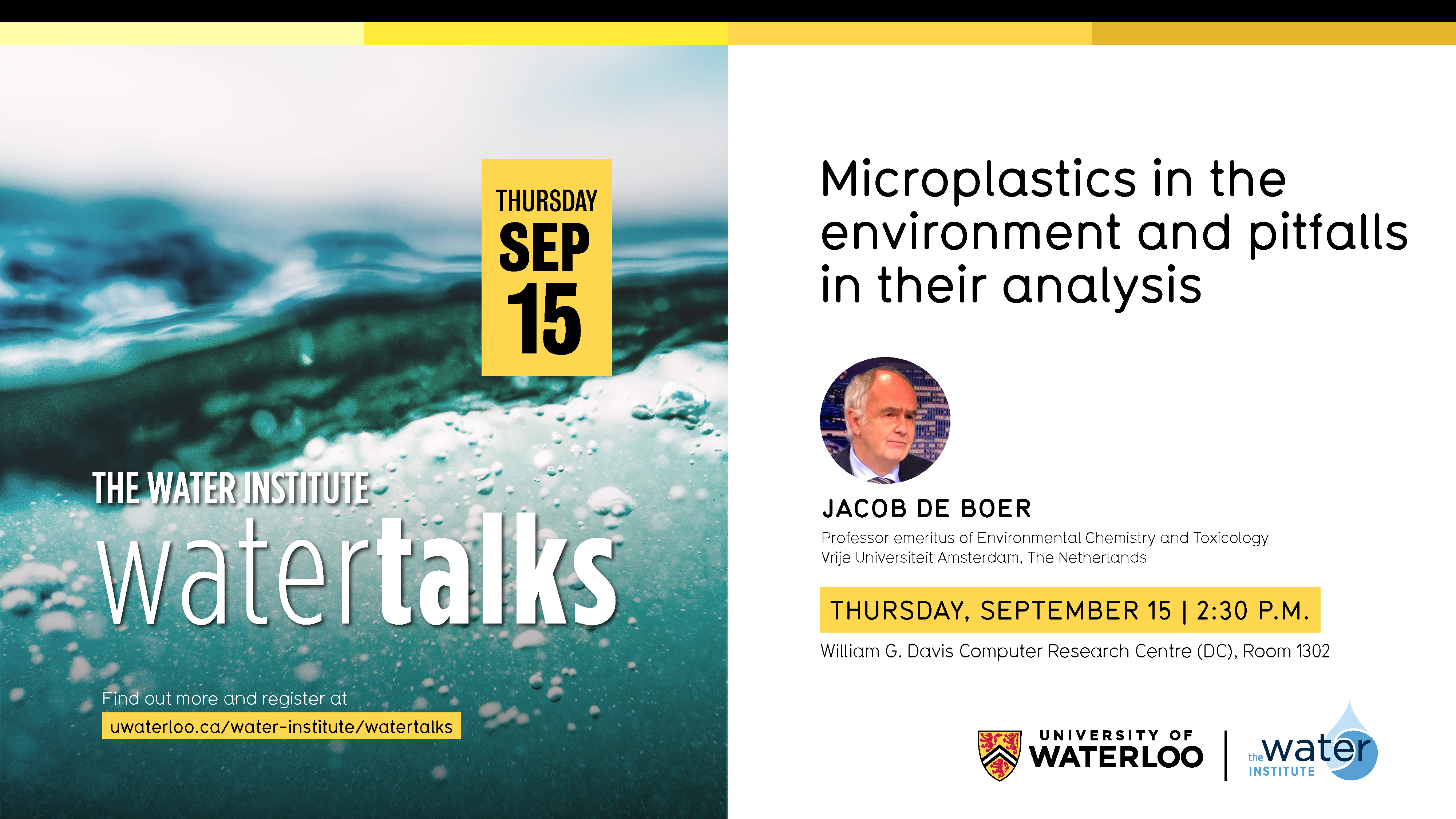
By Nancy Goucher and Stephanie Slowinski
Jacob de Boer knows how dangerous new chemicals can be for human health. As one of the world’s leading authorities on environmental chemistry, he’s spent over 47 years promoting responsible chemicals management in Europe and beyond. Jacob draws on these experiences to reflect on the progress and the challenges associated with researching one type of contaminant that is getting a lot of recent public attention: analyzing environmental microplastic pollution.
The University of Waterloo’s Water Institute hosted Jacob as part of its Water Talk lecture series on September 15, 2022. The event was well timed as it took place the day before the Microplastics Fingerprinting annual project meeting. In his talk, de Boer explains what makes analyzing microplastics different from studying other environmental contaminants. Ultimately, he argues, researchers need to address a number of key scientific challenges in order to improve confidence in microplastics data. This will be necessary to support evidence-based decision making on risk mitigation strategies.
Environmental chemistry and toxicology is not a new field. Researchers have been studying contaminants such as polychlorinated biphenyls (PCBs) and dichloro-diphenyl-trichloroethane (DDT) for many decades now. But de Boer argues that microplastics are different and that requires us to create new standards and methods. Unlike many other contaminants, microplastics have a physical component that needs to be considered. They come in different shapes such as fibres and fragments, in different sizes (e.g., 20 µm versus 200 µm), and in different polymer types (e.g., polyethylene versus polystyrene). In the environment, these particles can be lumped together in one area of a sample or spread throughout – there tends to be no even distribution of microplastics. That means if we are trying to determine the extent of microplastic pollution in the sediment of a lake (i.e., the concentration), for instance, you cannot assume that every 100 grams of sediment contains the same number of microplastic particles as your 100-gram sample. This heterogeneous distribution of microplastics in the environment therefore presents a challenge when trying to interpret measurements of microplastics pollution in single samples from the field. However, de Boer pointed out that one approach for accounting for this heterogeneity and the associated uncertainty of quantifying microplastics pollution is to use statistical techniques. PhD student Frank Zhu and his supervisor Dr. Wayne Parker are working on these statistical techniques to account for uncertainty in estimating microplastics pollution.
Another dilemma faced by those trying to characterize microplastics is figuring out which methods produce the most accurate results quickly and efficiently. de Boer explains there are a number of different analytical approaches that can be used (many of which are currently being tested by the Microplastics Fingerprinting team) such as microscopy, Fourier-transform infrared microspectroscopy (μ-FTIR), Raman microspectroscopy (μ-Raman), and pyrolysis—gas chromatography/mass spectrometry. Researchers are still in the midst of testing and comparing the approaches but early results suggest that:
- Each approach comes with its own set of pros and cons;
- You should select your approach based on your goals (e.g., quantification, identification, etc.); and
- Researchers should use at least two approaches in their studies.
de Boer also emphasized the need for standardized certified reference materials that can be used to compare between methods and between the same method executed in different labs. He highlighted that these certified reference materials should contain a mixture of microplastic morphologies and types that are like the mixtures found in the environment. However, producing these certified reference materials is challenging because of the large variety of microplastic shapes, sizes and types in the environment. Producing and using these certified reference materials across different labs around the world will be important for standardizing the measurement of microplastics pollution across environments.
Finally, de Boer discussed the efforts of his colleagues at Vrije University to discover and quantify plastic particles in human blood. Their published research finds that while current methodologies are somewhat problematic (for the reasons mentioned above), all signs point to the presence of microplastics in human blood. Further research is required to understand whether this presents a public health risk.
To learn more about how the University of Waterloo’s Microplastics Fingerprinting project is working to address some of the methodological challenges associated with microplastics detection and analysis, you can read various articles on our project news webpage.